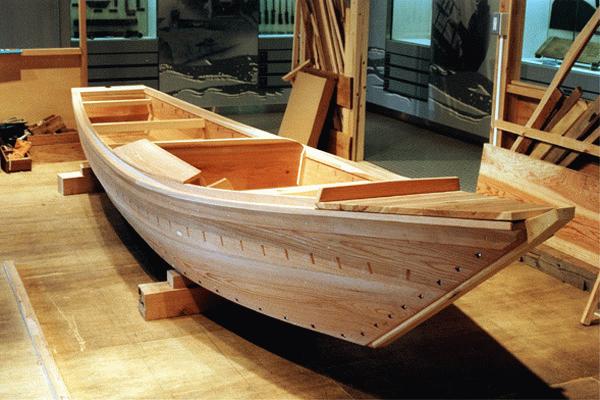Bekabune

I built this boat with Mr. Nobuji Udagawa, who once ran one of six boat building "houses" in Urayasu. Udagawa estimates that he built about 300 bekabune in his career, along with larger motor and sailing fishing craft. He told me that in the late 1950's an uncle from the city urged him to get a bandsaw -- this was the first power tool in all of Urayasu. In the museum project we used no power tools. I ripped all the planking for the boat with a handsaw and planed everything by hand from rough lumber. The planking and transom of the boat were sugi (Japanese cedar) and the beams and stem were kaya (Japanese nutmeg).
Unlike my other apprenticeships, where I had a secondary role (to varying degrees) in the building of the boat, Mr. Udagawa wanted me do almost all of the work on the bekabune. At each step he would demonstrate what had to be done and then leave the work to me. He would then happily explain what was happening to visitors to the museum, all the while keeping a close watch on me.
Unlike other Japanese boats, bekabune have very thin planking (though not thin by western standards); hence the name bekabune is probably onomatopoetic: the sound of waves slapping the hull of these boats made the sound peka, peka, peka... The light construction may be because these boats were often carried aboard larger motorboats and taken out to the fishing grounds, where they were used in clamming and to gather nori, a type of Japanese seaweed cultivated on nets. The seam between the upper and lower planks meets flush, unlike the overlap seen in other Japanese boats. This was to prevent the boats from snagging the nori nets.
Japanese boat builders do not rely on clamps but instead use wooden props to hold the planking in place during construction. Props braced to ceiling beams hold the curve of the bottom plank. Mr. Udagawa did not like the plywood floor of the boat shop; he preferred a traditional shop floor of packed clay, saying that props were less likely to slip. The small mortises visible along the plank seams show where the special boat nails are inserted that edge fasten the planks to one another.
For more information about bekabune see the Museum Boats and my articles in the Research and Publications pages.
